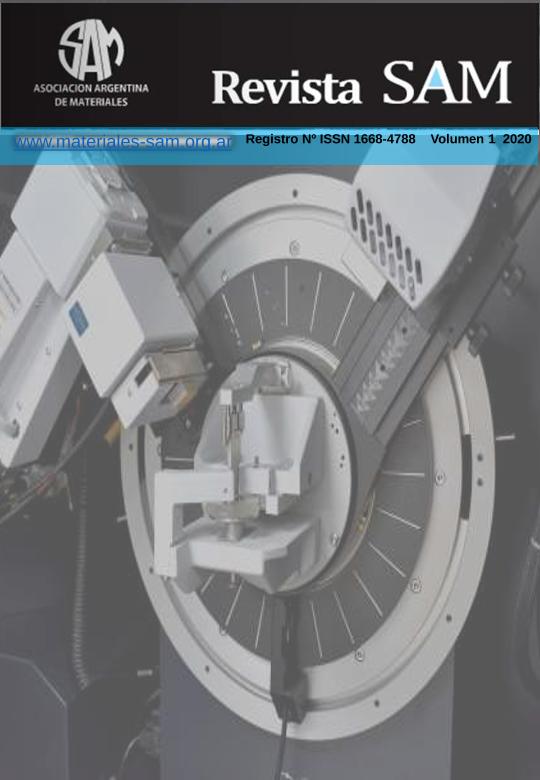Artículo
El recipiente de presión es el componente estructural principal de los reactores nucleares de agua presurizada. Éste contiene el núcleo del reactor y el agua utilizada como moderador y refrigerante, por lo cual cualquier falla estructural del recipiente puede tener consecuencias severas en la seguridad de la planta. Por esta razón, la industria nuclear suele requerir análisis de integridad estructural basados en la mecánica de fractura para la evaluación de defectos tipo fisuras, postulados o presentes, en los recipientes de presión. Para esto, resulta indispensable disponer de datos específicos de la tenacidad a la fractura del material del componente. En este trabajo se presentan los primeros resultados obtenidos en la caracterización de la tenacidad a la fractura del acero forjado SA-508 Gr. 3 Cl. 1, empleado en la fabricación del recipiente de presión del reactor nuclear argentino CAREM-25. Se obtuvieron curvas de resistencia J-R a temperatura ambiente siguiendo la norma ASTM E1820. Se ensayaron probetas denominadas C-R, C-L y L-C de acuerdo al código de orientación de la normal al plano de la fisura (primera letra) y dirección de crecimiento del frente de fisura (segunda letra) para cilindros huecos establecidos en ASTM E1823, tomándose como referencia la geometría cilíndrica del forjado del cual se obtuvieron los cupones de ensayo (C: circunferencial, R: radial, L: longitudinal). Las curvas obte- nidas resultaron similares entre sí, aunque se observó una leve menor resistencia a la propagación de fisuras en la dirección circunferencial (probetas L-C). Estos resultados también fueron comparados con curvas J-R obte- nidas mediante un método indirecto basado en la energía absorbida en ensayos de impacto de Charpy. Se concluye que esta aproximación genera estimaciones aceptables y conservativas de las curvas experimentales. The pressure vessel is the main structural component of nuclear pressurized water reactors. It contains the reactor core and the water used as coolant and moderator and, thus, any structural failure of the vessel may lead to severe consequences on the safety of the plant. For this reason, the nuclear industry usually requires structural integrity analyses based on fracture mechanics for the evaluation of postulated or present crack type defects in pressure vessels. For this, it is necessary to dispose of specific data on the fracture toughness of the component material. This work presents the first results obtained in the characterization of the fracture tough-ness of the forged steel SA-508 Gr. 3 Cl. 1 that is being used in the manufacturing of the pressure vessel of the Argentine nuclear reactor CAREM-25. J-R resistance curves were obtained at room temperature following ASTM E1820 standard. Testing was performed in specimens called C-R, C-L and L-C according to the orien-tation code of the normal to the crack plane (first letter) and crack propagation direction (second letter) for hollow cylinders defined in ASTM E1823, using the cylindrical geometry of the forgings from which the test-ing coupons were obtained as a reference (C: circumferential, R: radial, L: longitudinal). The curves obtained with different orientations were similar, although a slightly lower crack propagation resistance was observed in the circumferential direction (specimen L-C). These results were also compared with J-R curves obtained by an indirect method based on the absorbed energy in Charpy tests. It is concluded that this method generates acceptable and conservative estimates of the experimental curves.
Evaluación de la tenacidad a la fractura de los materiales del recipiente de presión del reactor nuclear CAREM-25
Título:
Fracture toughness evaluation of the CAREM-25 nuclear reactor pressure vessel materials
Fecha de publicación:
12/2020
Editorial:
Sociedad Argentina de Materiales
Revista:
Asociación Argentina de Materiales
ISSN:
1668-4788
Idioma:
Español
Tipo de recurso:
Artículo publicado
Clasificación temática:
Resumen
Palabras clave:
FRACTURE TOUGHNESS
,
J-RESISTANCE CURVES
,
SA-508
,
PRESSURE VESSEL
,
CAREM-25
Archivos asociados
Licencia
Identificadores
Colecciones
Articulos(CCT - PATAGONIA NORTE)
Articulos de CTRO.CIENTIFICO TECNOL.CONICET - PATAGONIA NORTE
Articulos de CTRO.CIENTIFICO TECNOL.CONICET - PATAGONIA NORTE
Citación
Bergant, Marcos Antonio; Yawny, Alejandro Andres; Perez Ipiña, Juan Elias; Evaluación de la tenacidad a la fractura de los materiales del recipiente de presión del reactor nuclear CAREM-25; Sociedad Argentina de Materiales; Asociación Argentina de Materiales; 1; 12-2020; 68-75
Compartir




